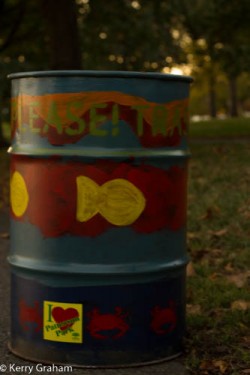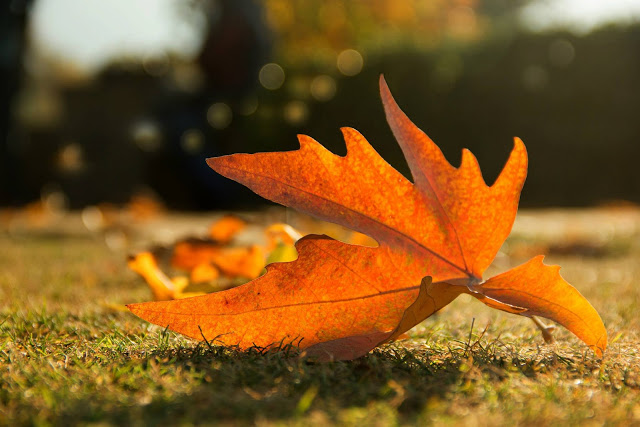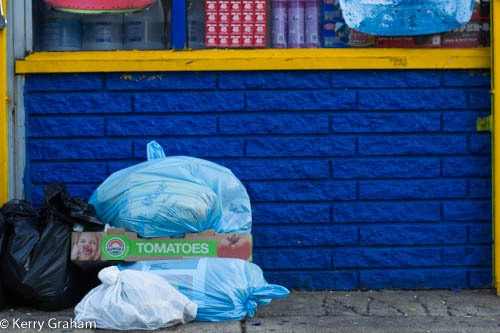It was the golden hour.
I glanced out the window. Streaks of sunlight slipped through the sky and danced along our tree-lined street. The light set the leaves—russet, crimson, marigold—ablaze.
I scrambled for my camera, and with a hasty goodbye to my boyfriend, hurried outside. I haven’t been photographing for long, but I quickly recognized the magnificence of the golden—or magical, depending on who you ask—hour.
This period of time just after sunrise and just before sunset offers the day’s most brilliant light.
It’s soft, and warm, and just plain incredible. In these fleeting moments, photographs tend to come to life effortlessly. “Magical” is not an overstatement.
We live only a few blocks away from one of Baltimore’s largest parks, and I was eager to capture the fall foliage as the sun set. I walked briskly, envisioning the best vantage points to shoot.
As I crossed the street, a splash of color caught my attention. Vibrant blue and sunny yellow gleamed to my left, and I stopped for a closer look. It wasn’t the late October sky that had me so entranced, but rather the brick wall of a corner store. The space between the large storefront window and the sidewalk was painted cobalt blue; a shocking yellow framed it.
During the revered golden hour, on my way to a striking public park in arguably the most beautiful of the seasons, I was distracted by a painted wall.
With bags of trash in front of it.
I surely didn’t expect to stop, stoop and start shooting, but that’s exactly what happened. Something about the scene demanded to be photographed; maybe it was the placement of the bags, how someone had tossed them to the left edge of the wall. Maybe it was the contrast of the vibrant colors with the worn bags. I honestly don’t know why I photographed that corner store. But I know it strangely felt right.
I wasn’t crouched there for long—certainly no more than two or three minutes—but during that time, a man on his way into the store walked tentatively toward me.
“You’re taking pictures of the trash?” he called to me, sounding almost nervous. “You know, they’ll pick it up Monday.”
I sensed immediately his apprehension, but didn’t understand it. “Oh, no, no,” I said cheerily. “It’s okay. I think it’s . . . pretty.”
“Pretty.”
That didn’t actually capture what I thought about the trash bags in this public space. Not at all. It wasn’t pretty. It was raw, and gritty, and real—but when I imagined saying that to this stranger, I felt self-conscious. So I labeled it, inaccurately, pretty.
A moment later, I put my lens cap back on, and continued toward the park. The picturesque evening persisted, but my intention had shifted.
Instead of planning how and where to photograph the best of the park during the fading golden hour—that tree with leaves so maroon they look unreal, or the glimmering reflection of the pond—I kept thinking about those bags of garbage. I felt, peculiarly, drawn to them.
 When I entered the park, a path led me past a merrily painted metal trash can. I felt various shades of near-shock: one because I again felt compelled to photograph garbage, and another because this trash can had never interested me before.
When I entered the park, a path led me past a merrily painted metal trash can. I felt various shades of near-shock: one because I again felt compelled to photograph garbage, and another because this trash can had never interested me before.
And so again, I delayed my destination of natural, pleasing (sanitary) photographs, and hovered close to what others had discarded. Again, colors—bright, forming a perky design—attracted me. The light of the golden hour had begun to dwindle, and I had literally turned my back to it. To photograph a painted trash can. I adjusted the settings on my camera to try to truly capture the intensity of these hues.
Whose idea was it to paint this trash can, I wondered, and why? Did it help decrease the amount of littering in the park? Were others drawn to it, too?
Questions continued to whisper to me as I photographed. They contributed to my continuing internal conflict; I still didn’t understand why I wanted to take these pictures, and acknowledged the possibility that maybe the pictures wanted to be taken.
I shifted, crouched and leaned so I could better frame my shot. I experimented with aperture and shutter speed to adjust the amount of light for each photograph. And I mused: just what about this subject compels me? Why am I intrigued by what others have literally rejected?
The full realization didn’t come until later, but it began to form slowly in that moment: for me, art isn’t only about the parts of life that contain beauty; that bring us pleasure; that satisfy, comfort, cheer us.
Art is about the dirty, dim, and dark parts of life, too; the facets that hurt and discourage and even stink.
My idea of art isn’t selective. It is inclusive. It’s like my worldview: we are all important, even those whom society has deemed dirty, dim, or dark. Even those of us who feel hurt and discouraged. Even those of us who stink. We all matter, but if society sees us essentially as trash, our value is so often underrepresented and under-appreciated. In fact, our value is virtually denied.
It makes us susceptible to being viewed, and treated, like trash. Worthless. Inconvenient. Forgettable.
And that dismays me.
I was in the midst of photographing the rim of the trash can, trying to juxtapose it with the green of the park, when I heard laughter behind me. I tried to ignore it so I could focus on my shot, but it came closer.
“Excuse me,” the owner of the laughter said to me, still chuckling. “I’d just like to put this in here.”
A small, white tightly wrapped plastic bag landed lightly on top of the garbage already resting in the trash can. The woman smiled, amused, as she tugged at her dog’s leash. “You won’t want a picture of that.”
I opened my mouth to respond, but then shut it. My photos can, and will, refute better than my words.
Love elephant and want to go steady?
Sign up for our (curated) daily and weekly newsletters!
Editor: Catherine Monkman
Photos: Courtesy of Kerry Graham & Sampada Shahasane/Pixoto






Read 1 comment and reply